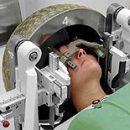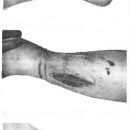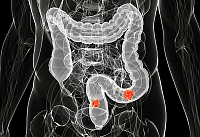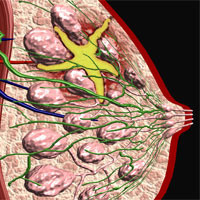Prostate adenoma (benign hyperplasia) - these are benign education in the prostate gland, which in their development squeeze the urethra. Direct consequence of prostate adenoma is disturbing normal urination.
Content
Prostate, or prostate iron, is an internal genital body actively involved in sexual and childbearing functions of men. After forty years, pretty unpleasant metamorphoses begin to occur with it: it is gradually compacted by it, and iron itself increases in the amount. It is this increase in prostate and wears the name of the adenoma, prostate hypertrophy or benign prostate hyperplasia (BPH). Such a disease is present in approximately 20 percent of men at the age of 40, in 70 percent aged 60 and 90 percent aged 80 years.
The reasons for the development of prostate adenoma today are not fully found. It is believed that this disease is one of the manifestations of male climax, t.E. Every elderly man risks.
The prostate gland (prostate) is often called the second heart of a man. Externally, it really looks like a small heart surrounding the urethra in the place where he departs from the bladder. With age, prostate sizes increase, iron gradually squeezes the channel, preventing urine passing. Often it ends with an acute urine delay requiring or installing a catheter, or a surgical operation. The main method of treating benign hyperplasia of the prostate gland remains the removal of the prostate surgical path, the operation techniques there are many.
Symptoms of prostate adenoma
 The first stage of the prostate gland adenoma (benign hyperplasia) is noted signs of changing the act of urination, which becomes less free and intense, more frequent night calls for urination appear. The appearance of imperative urges (uncontrolled) urinary urinss, which the patient cannot delay down to the irrepression of urine. The beginning of urination is preceded by a period of waiting, it is necessary to take care at the beginning and at the end of the act of urination. The jet for the act becomes weak up to the vertical fall, there is no former parabolic.
The first stage of the prostate gland adenoma (benign hyperplasia) is noted signs of changing the act of urination, which becomes less free and intense, more frequent night calls for urination appear. The appearance of imperative urges (uncontrolled) urinary urinss, which the patient cannot delay down to the irrepression of urine. The beginning of urination is preceded by a period of waiting, it is necessary to take care at the beginning and at the end of the act of urination. The jet for the act becomes weak up to the vertical fall, there is no former parabolic.
The second stage of development of prostate adenoma is raised by urination, the bladder is empty not completely, the amount of residual urine in the bladder reaches 100-200 ml. It causes a violation of the normal functioning of the bladder, inflammatory processes in the bladder may occur. Adenoma Prostate often leads to hematuria – The appearance of blood in the urine, which is a consequence of the break of the bladder veins. Stagnation of urine in the bladder leads to the formation of bladder stones. Against this background, the renal function is reduced, thirst and dry mouth appear. In fact, the increased prostate gland begins to grasp the urethra, the free current of urine becomes impossible, with the help of a fitting the patient literally pursues urine through the poverty channel. The act of urination turns into a protracted process for several minutes with interruptions and recreation.
The third stage of development of prostate adenoma is terminal – The bladder loses the ability to reduce, the fitness no longer helps empty the bladder. Urinary urge turn into a permanent process, urination occurs dropwise or minimal portions. Urine begins to spontaneously stand out drops, renal failure is developing, constant headache.
Diagnostics of prostate adenoma
In order to exclude prostate cancer diagnosis, analysis. In addition, the amount of selected and residual urine is measured to evaluate the bladder functions.
Treatment of prostate adenoma
The conservative treatment of the prostate gland II of the stage can be ineffective. The initial period of the II stage of the prostate adenoma can be stabilized and with long-term conservative treatment, the patient returns to normal. Operational intervention for the treatment of prostate gland adenoma stage II applies in the absence of the expected effect of conservative treatment. If you feel the above symptoms, you need to urgently consult a doctor - you still have a chance without surgery to get rid of this cunning ailment.
In the third stage of the development of prostate adenoma, only surgical intervention is effective, without which the urinary delay occurs, the water-electrolyte balance is disturbed and the patient dies.
Treatment of prostate adenoma (benign hyperplasia) depends on the stage of the disease, the results of the survey, individual tolerance of the patient of various drugs. Competently and qualitatively selected comprehensive treatment technique, in most cases it allows you to completely get rid of the prostate adenoma. Treatment may include various types of therapeutic, and in running cases and surgical actions.









